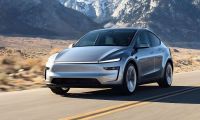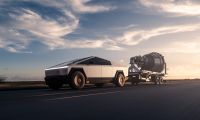If you are a fan of cars and participate in social media, you no doubt have seen many reports that new vehicle inventory is rising and lead times for orders dropping. Torque News investigated the facts, and the truth is, the recovery is barely underway - if it has started at all.
We reached out to 11 of the nation's top automotive companies, including those with the highest volume of deliveries, and also a few brands that are popular with their niche but have a lower level of delivery in normal times. What we discovered is that only two were willing to offer any comment on dealer inventories rising. Multiple automakers replied and told us that an inventory recovery simply isn’t happening. Torque News offered the opportunity to comment anonymously. One full-line automaker put it succinctly, saying, “We are not out of the woods yet.” Another said, "I’d like to tell you inventories are starting to stabilize, but it just isn’t true."
Look a bit more closely at the YouTube “news” videos that purport to be highlighting rising inventories, and you may find the titles are just teasers designed to entice those hoping for such a reality. However, when you view the video, the facts show scant signs of inventory stabilization and no meaningful dealer stock inventory change.
One such example is from the Youtube channel “Dave B sells Chevy.” Dave has about 20,000 subscribers, which we find to be outstanding for a local car salesperson. In his video, Dave B. very clearly explains why percent increases in inventory are meaningless right now. Imagine if a dealer normally had 300 new cars in stock prior to the shortage crisis. Let’s also say that last year at this time that dealer had 10 new vehicles on their lot, unsold, ready for a walk-up buyer to purchase and drive home. Finally, let’s say that dealer now has 25 vehicles that are unsold and ready to be purchased by the next customer through the door. Is it truthful to say that “Inventories Are Up 150%?” Yes and no. Yes, inventories are up by 150% since one year ago. On the other side of the coin is the fact that inventories are still at just 10% of normal levels.
Tesla Inventory
Tesla’s volume of Model 3 premium-priced sedans and Model Y premium-priced crossovers do very well in their segments. In fact, it is easy to call Tesla a leader in these two individual model segments. We like the Tesla inventory example because there are no dealers. You purchase your car before it is built, Tesla builds it and then sends it to your most convenient delivery retail location. Tesla has no inventory of new vehicles to speak of today. At least our search can’t find any. However, there is very good news from Tesla related to coming deliveries.
The first bit of news is that lead times for the Model 3 have dropped to between a few weeks to as long as about 60 days, according to the Tesla online ordering page. This is a dramatic shift in lead times. Tesla lead times were five times longer this time last year. The Model Y is also showing dramatic improvements in lead times.
In its most recent quarterly report, Tesla also detailed how it will stop its practice of shipping all its cars to customers near the end of each quarter. Instead, deliveries will be spread more uniformly across each quarter. In addition, Tesla is telling (warning?) investors to be prepared for Tesla retail locations to actually have inventory of unsold, unallocated, new cars and crossovers on their lots starting in the next quarter and in the future. Clearly, Tesla sees demand stabilizing and a return to normalcy on the horizon.
Honda Guidance
One company that is going on the record regarding its U.S. inventory is Honda. Honda is about to launch two of its three most important models as new generations in 2023. Both the new Accord and CR-V look to strengthen their grip on important segments for the brand. And both will primarily ship as electrified (hybrid) models.
The news is that Honda does see a strengthening of its inventories beginning in Q4 (which is this quarter). Here’s what Honda offered on October 3rd:
“While the auto industry seems to be hit by one challenge after another with transportation issues and parts shortages, the efforts of our dealers helped achieve strong turn rates that maximize the available inventory for our customers,” said Mamadou Diallo, vice president of Auto Sales for American Honda Motor Co., Inc. “Now, the pipeline is getting stronger with the expectation that increased production in the fourth quarter will support important upcoming all-new model introductions, like the CR-V, CR-V Hybrid and Pilot.”
Hyundai Guidance
Another company that responded to our request for a statement with positive news is Hyundai. Hyundai has been crushing it lately with new product introductions. Its award-winning Ioniq 5 battery-electric vehicle had a strong launch during the worst of times and continues to enjoy delivery levels on par with its peers.
Related Story: One Image That Conveys How Serious Hyundai Is About Electric Vehicles
Here’s what Randy Parker, CEO, Hyundai Motor America told Torque News:
“We have a strong product line-up with EVs and a variety of HEVs and PHEVs. Our company has done an excellent job of keeping the pipeline moving along with inventory management coming out of Korea and our plant in Alabama. Through the challenges of fighting the pandemic and microchip shortage, Hyundai continues to make sure we are getting products to our dealers and taking care of our customers.”
Ford Inventory Status
Ford opted not to offer a statement when we requested one, but we have been in touch with Boston-area dealers. As it turns out, your author has been trying to buy a near-base Maverick Hybrid or near-base F-150 Lightning to replace an aging utility vehicle in his home fleet. I have remained in touch with two Ford dealers in two New England states. There are some positive signs, but not for my choices of vehicle.
The Boston-area dealer spent some time explaining the inventory situation for both the Maverick Hybrid and the F-150 Lightning. When I asked in August if I could either walk in and buy one or order one, I was told by both Ford dealers that neither was available for sale. No inventory, no orders would be accepted. On the day this article is published (late October), I spoke to the same Boston-area dealer and got more information. The Maverick hybrid is off the table. No inventory and no orders will be accepted. It is safe to say that this is not a vehicle Ford is selling today.
The F-150 Lightning battery-electric vehicle is a different situation. My budget is limited, so I am looking for a base Lightning called the “Pro” by Ford. The dealer told me that “He had never seen a Lightning in person that was not a Lariat or higher trim.” He also told me that I could not order an F-150 Lightning Pro. Finally, he reminded me the price had risen from an MSRP below $40K to nearly $50K for a bare-bones Lighting, even if one was available.
However, the Ford dealer did offer some positive developments overall. The lot now has over 20 unsold, unallocated new Fords of other models. These included a Ford F-150 Hybrid with a sticker of $60K. The salesperson told me, “This is the first time in more than a year that we have had 20 new vehicles in stock.”
Inventory Picture Summary - Fall and Early Winter of 2022
Shoppers today will find that many key models are still not available or have very long lead times. However, as the Tesla, Honda, Ford, and Hyundai examples show, there is light at the end of the tunnel. Could we see a return to the days when inventory of popular models sit waiting to be purchased by walk-in shoppers? Unlikely. However, perhaps some models will be available for order with a reasonable lead time.
Image of Hyundai dealership new car inventory by John Goreham.
John Goreham is a long-time New England Motor Press Association member and recovering engineer. John's interest in EVs goes back to 1990 when he designed the thermal control system for an EV battery as part of an academic team. After earning his mechanical engineering degree, John completed a marketing program at Northeastern University and worked with automotive component manufacturers, in the semiconductor industry, and in biotech. In addition to Torque News, John's work has appeared in print in dozens of American news outlets and he provides reviews to many vehicle shopping sites. You can follow John on TikTok @ToknCars, on Twitter, and view his credentials at Linkedin
Re-Publication. If you wish to re-use this content, please contact Torque News for terms and conditions.












